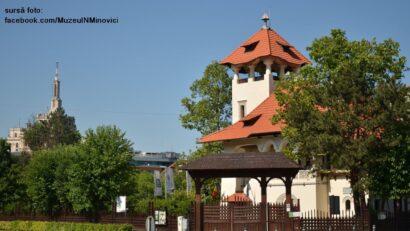Pandemics in 19th century Romania
Microbes, diseases and pandemics in 19th century Romania

Steliu Lambru, 09.08.2020, 13:00
Microorganisms
and the associated diseases that made pandemics possible have occurred with the
advancement of medicine, in the life of modern man. Because of microbes and
pandemics, healthcare policies were thought out and also because of microbes
and pandemics social behavior patterns were changed. In the Romanian space,
microorganisms and the diseases they caused grabbed everyone’s attention and
generated healthcare public policies precisely because they caused epidemics
and pandemics. The Romanian world in the 19th century had to face a
common enemy: the plague. However, other enemies, unseen and, until then, unbeknownst
to man, had manifested with a destructive virulence. Cholera was one such
enemy.
Jointly with
physician, anthropologist and professor Calin Cotoi with the University of
Bucharest we had a closer look at the new phenomenon that emerged in Romanians’
mindset, namely the microorganism. We found out from Calin Cotoi when the Romanians
first found out about the existence of the microorganisms that generated the
pandemics.
Part of the Romanians got to know that at the same time when the rest of the
world got to know it, after Pasteur first discovered the lactic acid fermentation
and then the alcoholic one. Then Pasteur revealed there was no such thing as a
spontaneous generation, meaning that small animals could not possibly be formed
out of nothing. The Romanian population elsewhere around the country, apart
from the numbers that had been involved in the healthcare and medical reform
was rather late to impart that kind of knowledge. In late 19th
century and early 20th century, the image of the microbe becomes
more popular in Romania.
The fear of
pestilence of the people in the 19th century was at least as strong as the fear
of the medieval man. According to Calin Cotoi, in 19th century
Europe, the microbiological enemy was a different one. The plague had by then
become history and a new, unseen, enemy emerged: the cholera.
Until around 1830 or thereabouts, the plagues had still been reported for
Romania. In the 19th century there was Caragea’s plague which
claimed the lives of many, many people. But the most interesting and, to my
mind, the most important disease for 19th century Romania was the cholera.
I should say, exaggerating things a little bit, that modern Romania was one of
the creations of cholera, of the European cholera pandemics. It is one of the
most creative diseases, socially speaking, in the 19th century, and
is very different from the plague, in this respect. The cholera succeeded to
break through the Hapsburg sanitary cordon, and, from India, its hotbeds
reached as far as Paris, London and North America, generating a thorough change
in the Western social space and, somehow indirectly, in the territories at the
Mouths of the Danube.
There is no
secret that epidemics and pandemics were literally generators of change in
history. Cholera did not make an exception to that rule either. Calin Cotoi
also shown that imposing the strict quarantine, whereby for 40 days running,
any transport of commodities and the movement of people were immediately
confined on the ship or in quarantine stations on the banks of river Danube,
all that favored the enhancement of the authority of the Romanian state.
Calin
Cotoi:
The Romanian state created quarantine stations on the banks of river Prut, but
mainly on the banks of river Danube. This time, the quarantine stations are
very tough, it’s just that, once created, these stations enter a time of
crisis. The Romanian state increasingly depended on the trade of grains, which
provided a source of financing and subsistence, and that grains trade is
jeopardized by too tough a quarantine. So there was always a tension between
the freedom of trade and the danger of cholera. I think it was out of that
crisis dilemma that Romania was created.
In the early 19th
century, Europe was hit by cholera, a new, unbeknownst disease, against which
no form of efficient fight had been discovered. The fact that the Romanian
space was modernized, becoming more European, made it possible for solutions
and treatments of the developed states to reach the Romanian space.
Calin Cotoi:
SOUNDBITE V.M.:
The cholera had no problem breaking through the old sanitary cordons that had
been erected especially against the plague and, elsewhere around the world,
against the yellow fever, devastating a Europe where the commercial, industrial
and urban progress saw their heydays. Europe had been taken by surprise by the
virulence of the cholera. As a reaction to that unknown disease, Europe created
several governance and medical systems, as we well as systems of recording the
diseases and of certain theories on the relationship the social milieu had with
the disease. All that put together provided a makeover regarding to European administration
and governance. Such public hygiene models, models of public policy, reached
Romania as well, somehow transforming the society. Those international models
occurred, as a reaction to that terrible and unknown disease. In Romania, they
failed significantly, because of the rift between the urban and the rural
areas. In the urban areas the implementation of the public hygiene methods was
successful, to a certain extent, yet in the rural regions, the failure of all
that was blatant.
In 19th
century Romania, microorganisms and pandemics did not cause only sorrow and
death, just as they had caused in the previous centuries. The contacts with the
Western European world made it possible for the Romanian world to turn from a
world of pessimism and fatalism into a world that had real possibilities of
eradicating all forms of pestilence.
(Translation by Eugen Nasta)





























